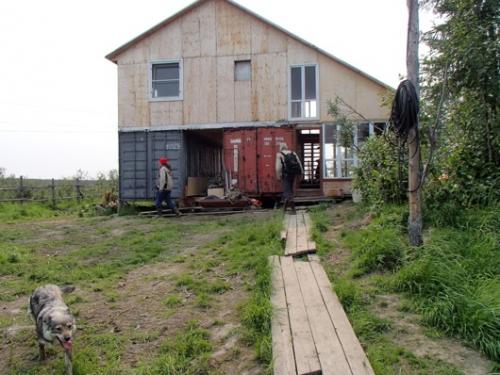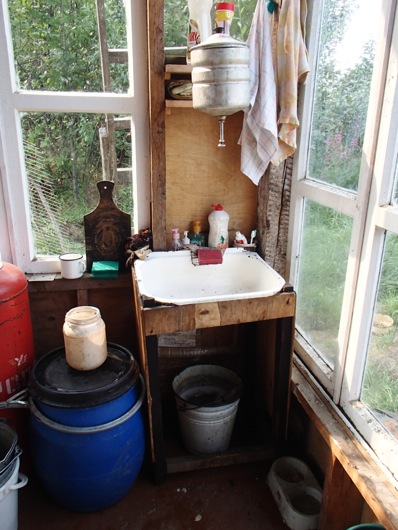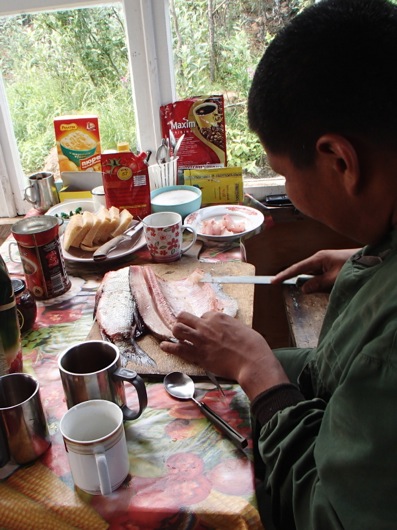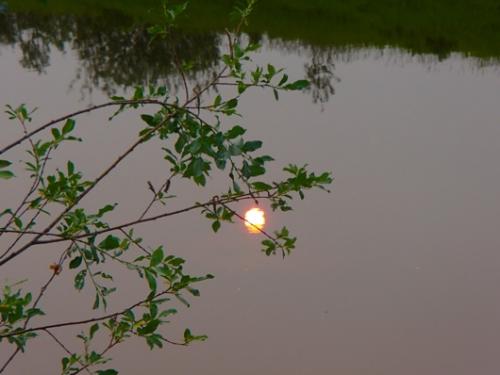Having spent the last three days working with the drillers to make a borehole in Pleistocene Park, we are just barely over halfway down to our goal of reaching 15 meters deep. However, in the words of Slava, a worker at Pleistocene Park and native Yucahgir man with an incredibly gentle disposition, “summer ended today.” As the cold weather blew in, we stopped drilling for a couple of days and headed back to the Northeast Science Station, I pause to reflect at the tough life of the workers in the wilderness that surrounds Pleistocene Park.
For a bit of perspective, it took us a three-hour boat ride (getting lost only once!) to get back to Cherskiy today in our underpowered boat. During that time, we passed only three primitive homesteads along the way. The workers of Pleistocene Park are hearty men, definitely living on the edge year round.
The three workers kindly shared their small house and kitchen with us over the last three nights, telling great stories in Russian (translated for me, the only American, by my Russian drilling teammates, Sasha Kholodov and Valentin Spektor) at meal times.

Their home is a dry cabin, (no running water or drains), typical of many homes in permafrost regions. This means fetching and boiling water, easier this time of year when the water is liquid, taking waste-water out when the bucket gets full, and of course, using the elevated outhouse. (Outhouses must be elevated as you simply can’t dig easily into the permafrost, and the waste has no where to leach into the frozen ground.)

As I mentioned, mealtime was a joy of swapping stories between the scientists and the workers. I decided that the fishing stories needed no translation – we all exaggerate the size of the fish that got away! However, twice I was treated to freshly-caught white fish that was lightly oiled and salted for only half an hour. I decided that this form of Siberian sushi was priceless!

I noticed that nothing escaped the observation of the workers. Their knowledge of the wildlife and permafrost was remarkable (including explaining the large and small bear tracks in the area!) They definitely had a love for this hard but beautiful land.

Stay curious my friends! - Mark Paricio
Don’t forget, you can follow the blogs of the students on the Polaris Project with me at: http://www.thepolarisproject.org.


Comments